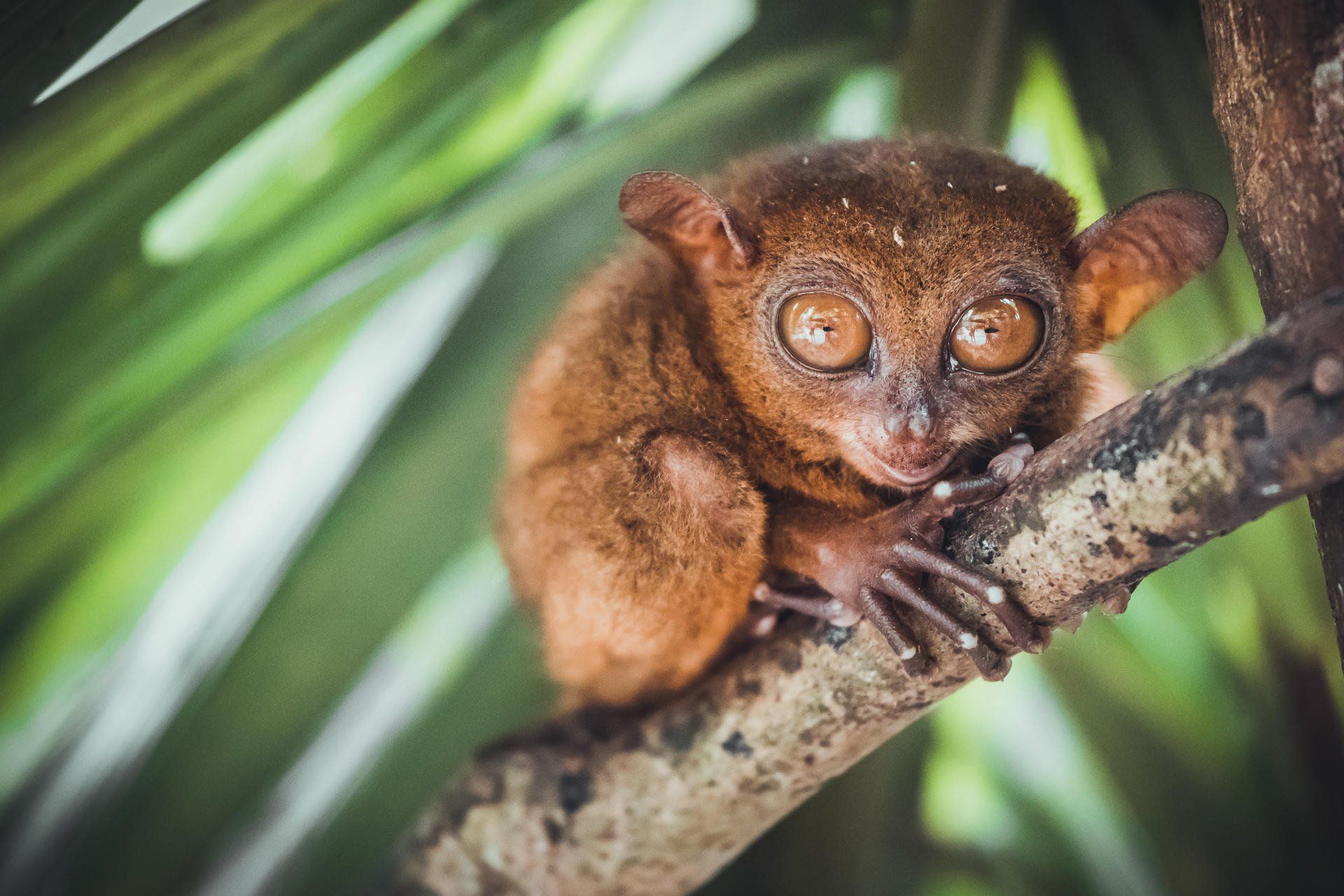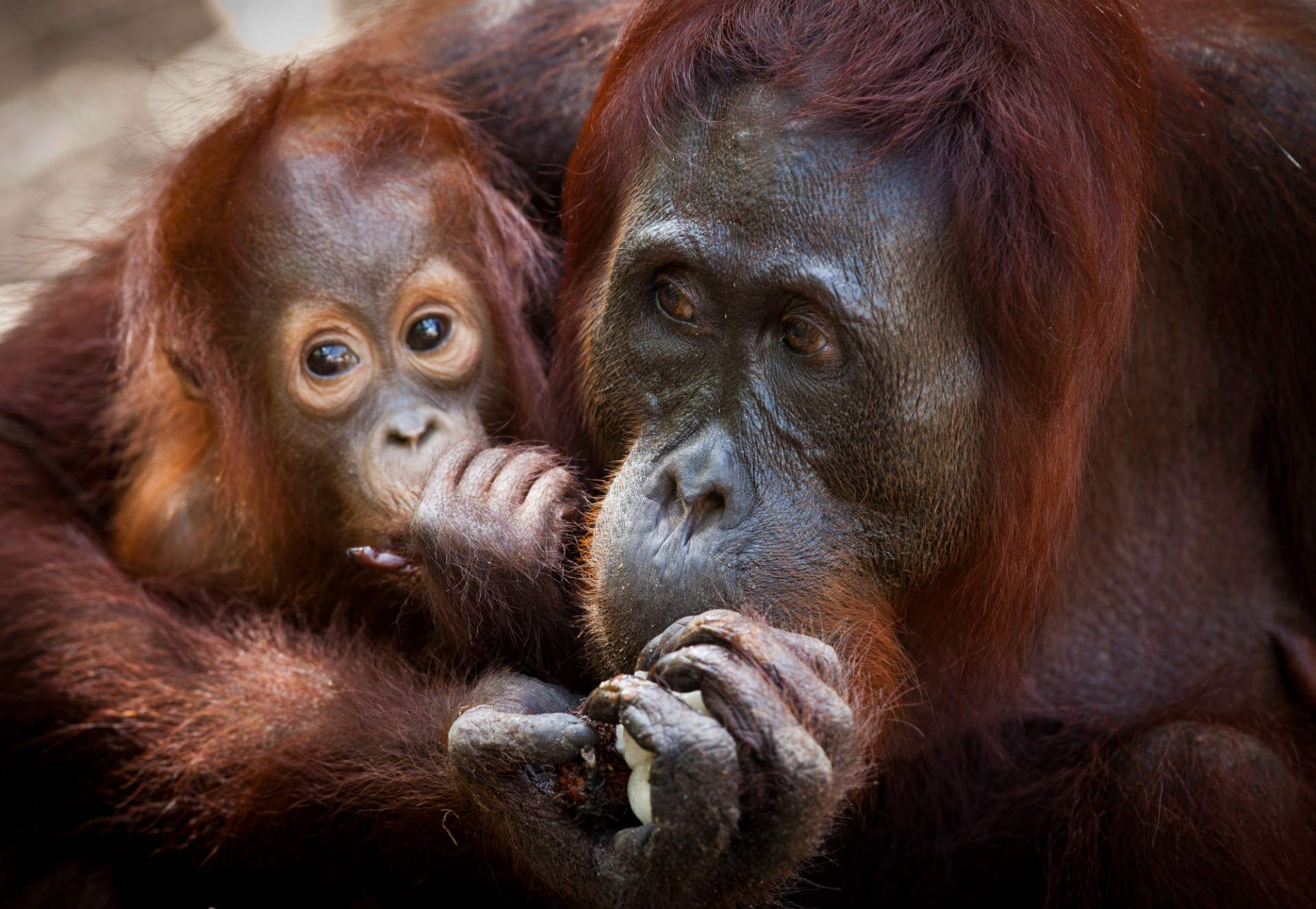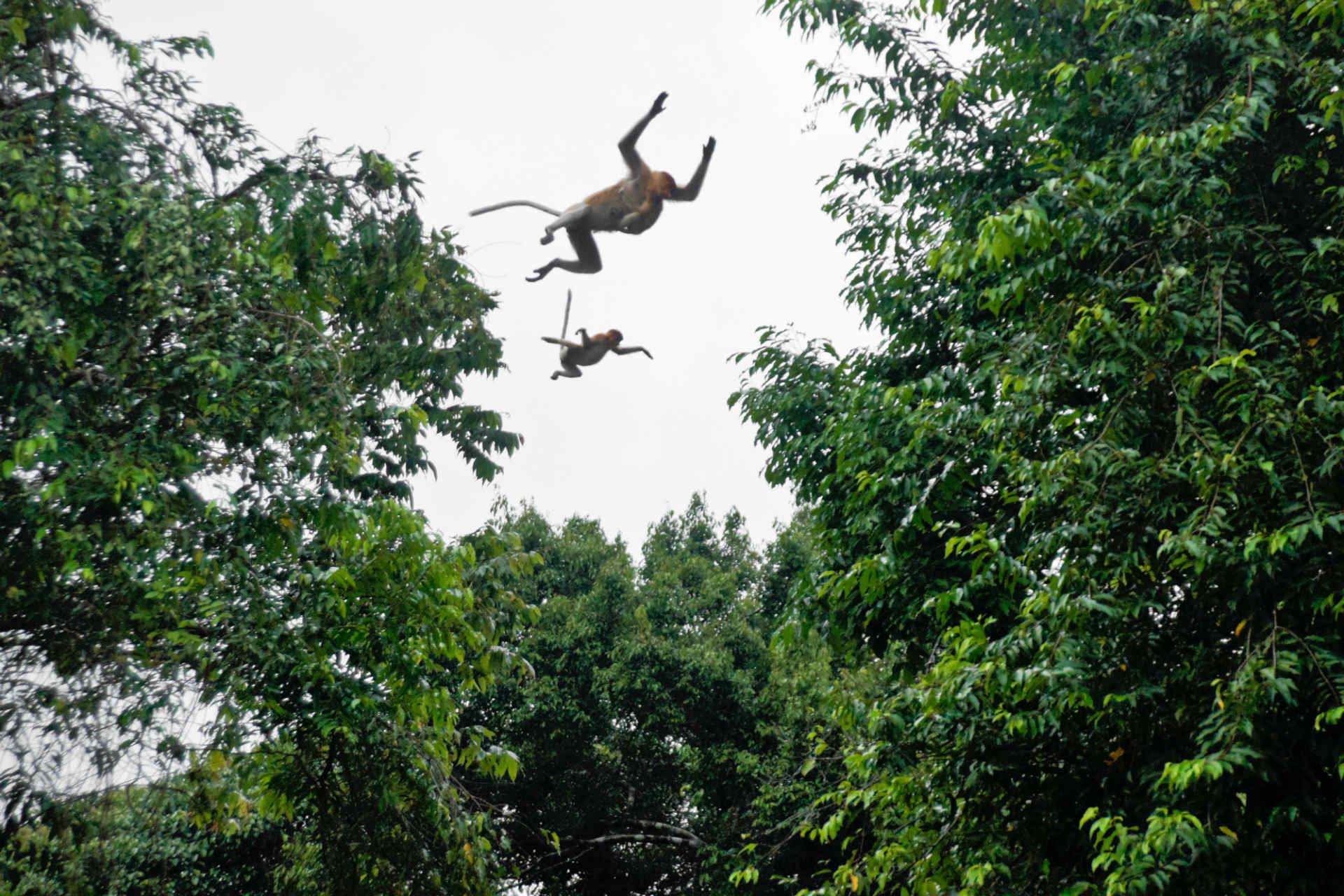Best places to see orangutans in Borneo
Borneo is one of the best places to see orangutans in the wild, bit it's also the world's third-largest island. So, where should you go? Three main locations in Borneo offer opportunities to see these amazing animals.
- Sepilok Orangutan Rehabilitation Centre
- Tanjung Puting National Park
- Borneo Orangutan Survival Foundation (BOSF)
#1 Sepilok Orangutan Rehabilitation Centre
Sepilok in the Malaysian state of Sabah is a rural, partly forested area that clings to some of Malaysia’s most celebrated wildlife, among them rhinoceros hornbills and, famously, orangutans.
A 3km turning south off the main road — 22km west up the main road from Sandakan — gives access to the Sepilok Orangutan Rehabilitation Centre.
Located at the end of the Sepilok road, the centre is open daily from 9am–noon and 2–4pm, with feeding times at 10am and 3pm.
Occupying a 43-square-kilometre patch of lowland rainforest, this is one of just a few such sanctuaries. Most of the orangutans here are victims of forest clearance. Many have been orphaned, injured or traumatized in the process.
While other orangutan residents have been illegally kept as pets, resulting in stunted survival instincts, the centre trains them to fend for themselves. This has led to many successful reintroductions to the wild.
The centre offers visitors a few different opportunities to observe orangutans. Firstly, a glass-fronted viewing gallery allows you to see them hone their climbing skills on a rope.
You can also walk trails through the trees, where guides will point out their nests.
Lastly, you can see them at a feeding station, where they’re offered only bananas to ensure they keep foraging. Don’t be alarmed if you see a poor turnout at the station – this can point to the health of the forest and its food sources.
Travel tip: our customisable Dazzling Kuching trip includes Sepilok Orangutan Rehabilitation Centre.
Other attractions near Sepilok Orangutan Rehabilitation Centre
The same turning off the main road also gives access to the Bornean Sun Bear Conservation Centre, and the Rainforest Discovery Centre.
Bornean Sun Bear Conservation Centre
Like orangutans, sun bears are vulnerable – either because their adorable, teddy-like appearance makes them attractive as pets, or because traditional medicine calls for their body parts.
Given that rescued bears need to relearn life skills, the Bornean Sun Bear Conservation Centre plays a vital role in protecting the species.
Opposite the Orangutan Rehabilitation Centre, the Bornean Sun Bear Conservation Centre is open daily from 9am–3.30pm and houses around forty bears in woodland enclosures. A small number of these can be viewed by the public.
Spotting scopes on the elevated boardwalks capture great close-up footage of the bears — ask staff to hold your camera against the eyepiece.

























